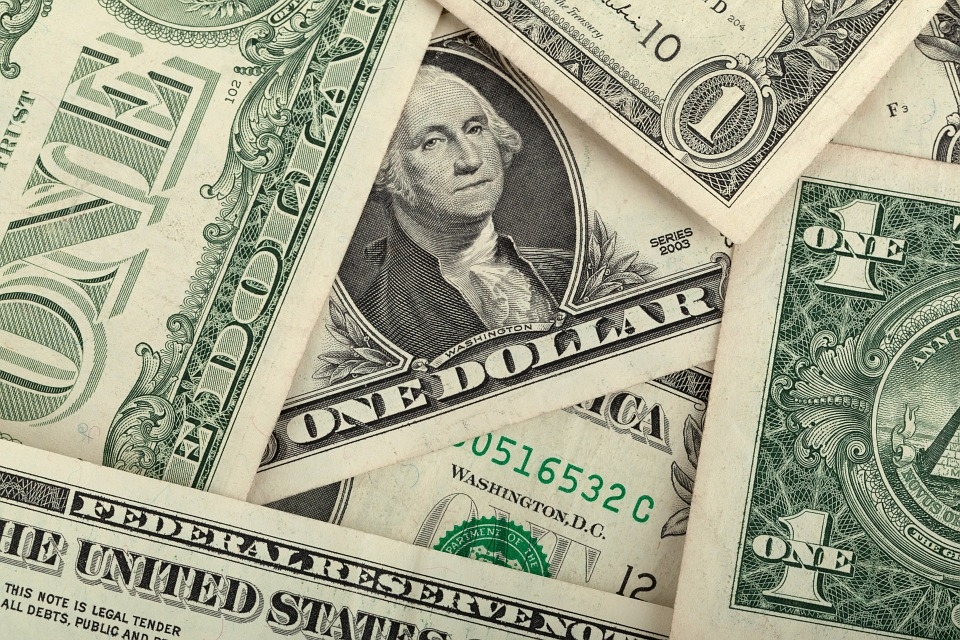US Dollar may lose its dominance against other currencies soon
The US dollar has been the dominant currency in the global economy for decades, but recent developments suggest that its reign may be coming to an end.
The US dollar has been the dominant currency in the global economy for decades, but recent developments suggest that its reign may be coming to an end. According to Emkay Global Financial Services in a report, the US dollar may not go down much against other currencies in the near future as the potential for further rate hikes is there and there is a flight to safety during uncertainties.
Over the past few months, de-dollarization has become a trend among several countries that have started dumping the US dollar to trade in their local currencies.
According to the report, the US dollar has conceded some ground to the other major currencies compared to the levels that were prevailing almost a month ago.
The only exception to the currency to which the USD ceded more ground is the Chinese Yuan. Against the rest of the lot, the losses are quite limited, and there may not be any severe losses in the near future for two reasons, Emkay Global said.
“The first is that the potential for further rate hikes in the US is still open, and with inflation remaining stubbornly high, the probability of higher rates too is high. In such a situation, the US dollar may not lose ground,” Emkay Global said.
Adding further, the company said the second and more important factor is — during uncertainties the flight to safety especially to the US Dollar denominated assets is a reality.
Also read: Vodafone-Idea Might Roll Out 5G Services Soon In India
Given the fluidity in the developments around the banking system, this preference for high quality instruments or sovereign risk may prevail for a few more months. The fall in yields for the US treasury notes and treasury bonds is the result of this movement.
According to a report by Eurizon SLJ Asset Management said, US dollar suffered a stunning collapse in 2022 in its market share as a reserve currency, presumably due to its muscular use of sanctions” after the Russia-Ukraine conflict.
Strategists Joana Freire and Stephen Jen said, The greenback’s share of global reserves has decreased from two-thirds in 2003 to 55 per cent in 2021 and 47 per cent in 2022.
“The [dollar] is losing its market share as a reserve currency at a much faster rate than is commonly believed,” they added.
As per the calculations, Jen and Freire said the dollar’s share of global reserves has declined by 11 per cent since 2016 on this adjusted basis.
Recently Bank of Baroda in a report said the Indian rupee is expected to gain against the US dollar in the next fortnight with a range of Rs 81.5/$-82.5/$.
In April this year, the Indian rupee gained 0.4 per cent building on a gain of 0.6 per cent it made in March 2023. While oil prices increased, weaker dollar, foreign portfolio investment (FPI) inflows and improvement in external outlook supported Indian rupee to gain, Bank of Baroda said.
According to the bank, in April the dollar index fell by 0.9 per cent on the expectation that the US Federal Reserve is nearing an end to its rate hike cycle gaining momentum, the report.
The European Central Bank (ECB) and the Bank of England are expected to continue with their rate hike cycle owing to the stickiness in the inflation, Bank of Baroda said.
In conclusion, the dominance of the US dollar is currently facing significant challenges. A shift away from the dollar is being fueled by concerns about America’s rising debt levels and geopolitical risks, as well as the rise of BRICS and China’s Yuan as alternative reserve currencies. The US dollar’s ability to maintain its status as a reserve currency is yet to be determined.




 Ms Kalinga
Ms Kalinga